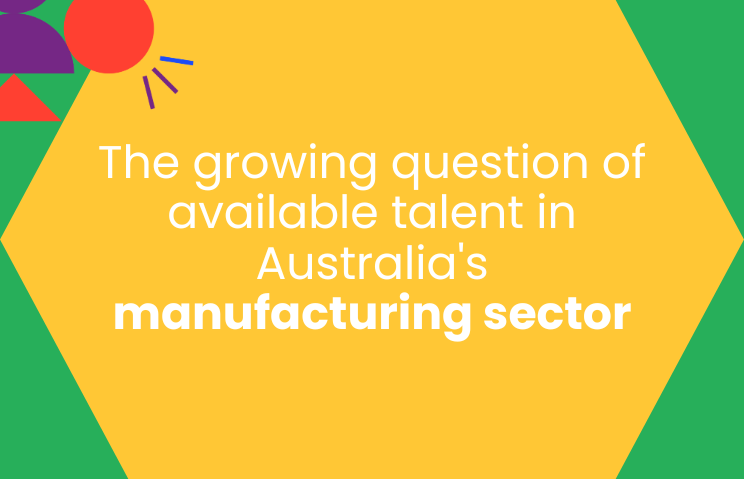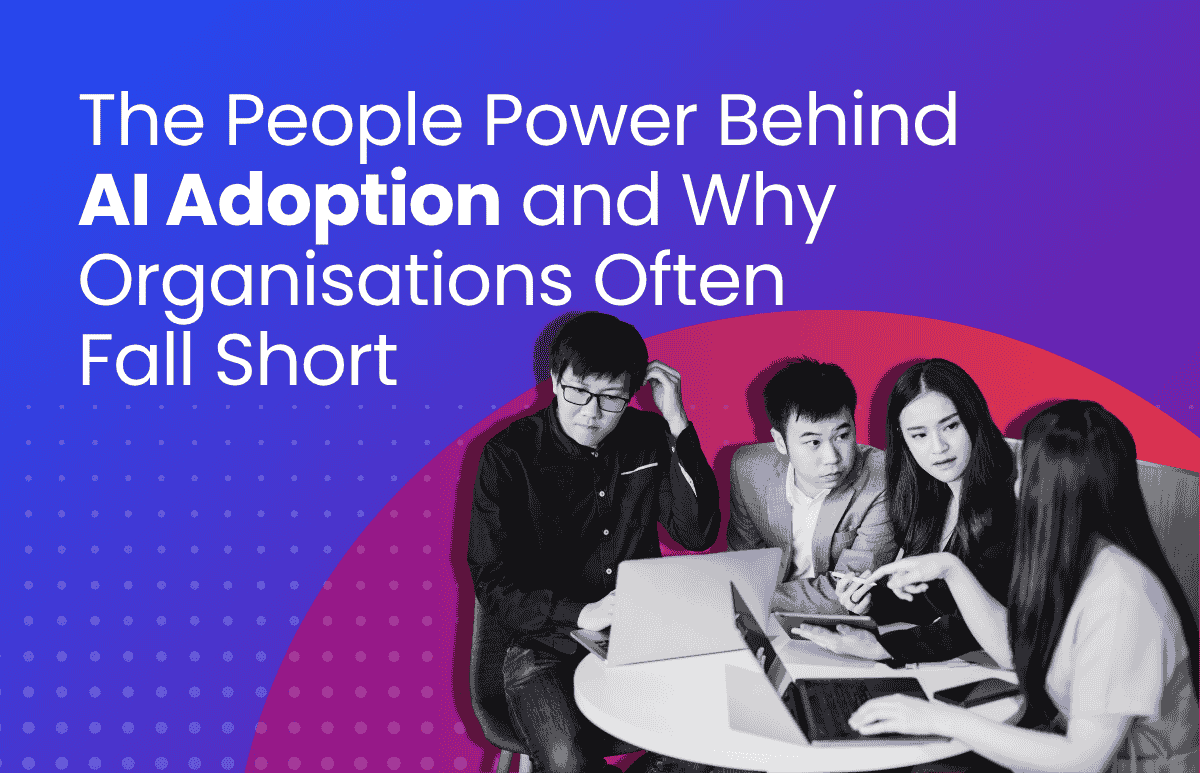The Growing Question of Available Talent in Australia’s Manufacturing Sector
Australia’s manufacturing industry is in the midst of a talent shortage that could have long-term implications for the sector’s competitiveness and growth.

HR leaders are already seeing the effects of this issue, from an ageing workforce and skills shortages to the challenges of adapting to new technologies and attracting younger workers.
So, what do we know about the workforce issues facing the Australian manufacturing sector and what HR leaders can do to tackle these challenges head-on and emerge successful?
A brief industry snapshot
Before we jump into the matter at hand, let’s take a quick look at the current state of the Australian manufacturing workforce:

Source: Job Skills Australia and ABS (Labour Force Survey, 2023, four-quarter average data, customised report).
An ageing workforce has created a critical gap
Australia’s manufacturing workforce is ageing, creating a pretty critical question mark. When you look at such a large cohort of workers approaching retirement, we’re going to see a significant talent gap.
In fact, Almost two-thirds (65%) of HR professionals surveyed in the Employing Older Workers Report 2023 by the Australian HR Institute said they are currently experiencing recruitment difficulties.
Food for thought:
- 40% of the manufacturing workforce is over 45. This is a clear sign that a large portion of the workforce will eventually near retirement age, and with fewer younger workers entering the industry, it creates a looming skills shortage.
- The average age of a manufacturing worker is steadily increasing, and as more senior employees retire, their vast industry experience and technical knowledge will be lost unless succession planning is put in place.
What does an ageing workforce mean for HR?
HR leaders may need to ramp up focus and energy on attracting younger talent to the sector. This is no simple task but there’s still a lot that can be done.
One potential way to do this is to invest in targeted recruitment campaigns aimed at younger Australians. This can be coupled with brand work to help change your organisation’s image and close this gap.
Additionally, succession planning should be a priority to transfer knowledge from older workers to the next generation.
Of course, once you’ve onboarded younger workers you need to retain them. Providing career progression, solid work-life balance, and training, will be vital as well as embracing up-and- coming tech that creates a more exciting and rewarding workplace.
Adapting to new technologies
As manufacturing moves further into the realm of ‘Industry 4.0’ (the fourth industrial revolution), the demand for workers with advanced technical skills is in a stage of rapid expansion. While the potential of manufacturing in the near future is pretty exciting, a bit of care needs to be taken to make sure you have hands on deck with the right skills.
Automation, robotics, AI, and data analytics are reshaping the way goods are produced, and the workforce needs to get ahead of it to remain productive and competitive.
Food for thought:
- Demand for skilled workers in areas like robotics, AI programming, and data analysis is outpacing supply. Australian manufacturing companies are struggling to find qualified candidates to fill these roles.
- Automation and digitalisation require new skills across the entire workforce — not just in highly technical roles. From machine operators to senior engineers, every employee needs to have a solid understanding of digital tools and processes to keep up with industry changes.
What does new technology adoption mean for HR?
HR leaders must ensure that existing employees are upskilled to keep up with technological advancements. Developing continuous learning programs, promoting digital literacy, and offering industry-specific training will be key to building a workforce that is capable of adapting to new technologies.
The challenge of attracting younger workers
Manufacturing has long struggled with attracting younger workers, and this is only getting harder. Many younger Australians perceive the sector as outdated, with limited career opportunities and less flexibility than industries like IT, healthcare, or creative services. You’ll need to conquer these perceptions to really thrive.
Food for thought:
- According to the Australian Bureau of Statistics, the number of younger people entering the manufacturing sector is declining, with many opting for industries that offer more flexible work options and better work-life balance.
- The growing trend of remote work in other sectors is also making it harder for manufacturing to compete for younger talent, particularly in regional areas where much of the manufacturing workforce is based.
What does the challenge of attracting younger workers mean for HR?
HR professionals need to change the narrative around manufacturing. Highlighting the innovative technologies used in modern manufacturing, the career progression opportunities available, and the critical role of the industry in Australia’s economy can help attract younger talent. Offering more flexible work options, better career development programmes, and improved work-life balance can also make manufacturing roles more attractive.
The issue of high turnover rates and employee retention
Manufacturing is notorious for high turnover rates, with many workers stating that they left the industry due to burnout, poor working conditions, and a lack of career development opportunities.
A recent survey by the Australian Manufacturing Workers’ Union (AMWU) found that turnover in manufacturing is running at over 20%, significantly higher than the national average.
Food for thought:
- Job satisfaction in the sector is often low due to factors such as repetitive work, long hours, and safety concerns in high-risk environments.
- Lack of career progression is another key driver of turnover. Many workers feel that there is little opportunity to move up the career ladder in manufacturing, leading to disengagement and eventual departure.
What do high turnover rates mean for HR?
HR leaders must focus on employee engagement and career development. Offering clear career pathways, increasing opportunities for training and upskilling, and improving workplace culture can help reduce turnover. Additionally, improving workplace safety and offering competitive compensation will help retain staff, particularly in high-risk roles.
The untapped opportunity of diversity
Manufacturing has long been a male-dominated industry, but as the sector evolves, embracing diversity and inclusion is becoming increasingly important for both business success and workforce engagement.
Food for thought:
- There is still a significant gender imbalance in manufacturing, with women making up only 28% of the workforce. The sector also struggles with cultural diversity, despite Australia’s growing multicultural population.
- Additionally, Indigenous Australians are underrepresented in the manufacturing workforce, which is particularly problematic given the need for culturally appropriate services in some areas of production and care.
What does the opportunity for higher diversity mean for HR?
It would be prudent for HR leaders to focus on creating inclusive recruitment processes that attract women, Indigenous Australians, and people from diverse cultural backgrounds into manufacturing roles.
Creating a culture of diversity and inclusion will not only improve your overall talent pool, but will also contribute to a more innovative and productive workforce.
What can HR leaders do to address these workforce challenges?
- Develop and promote career pathways
- Upskill the current workforce
- Attract younger talent
- Focus on retention
- Champion diversity and inclusion
- Strengthen industry partnerships
The view ahead to a sustainable workforce
The challenges facing Australia’s manufacturing sector are significant but certainly not something that can’t be handled. If you’re able to prioritise workforce development, focus on retention, and create more inclusive and attractive career pathways, you can help assure that your manufacturing organisation thrives in the face of changing demographics and technological advancements.
 HR Core
HR Core 









